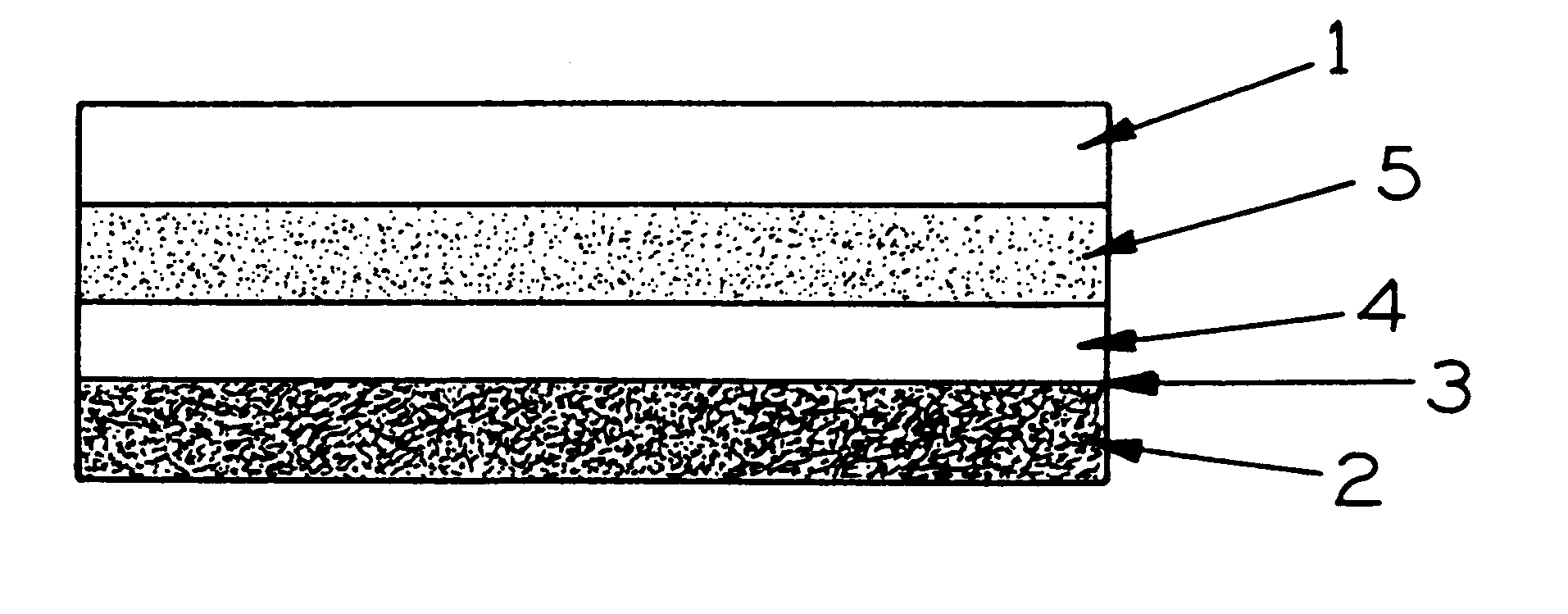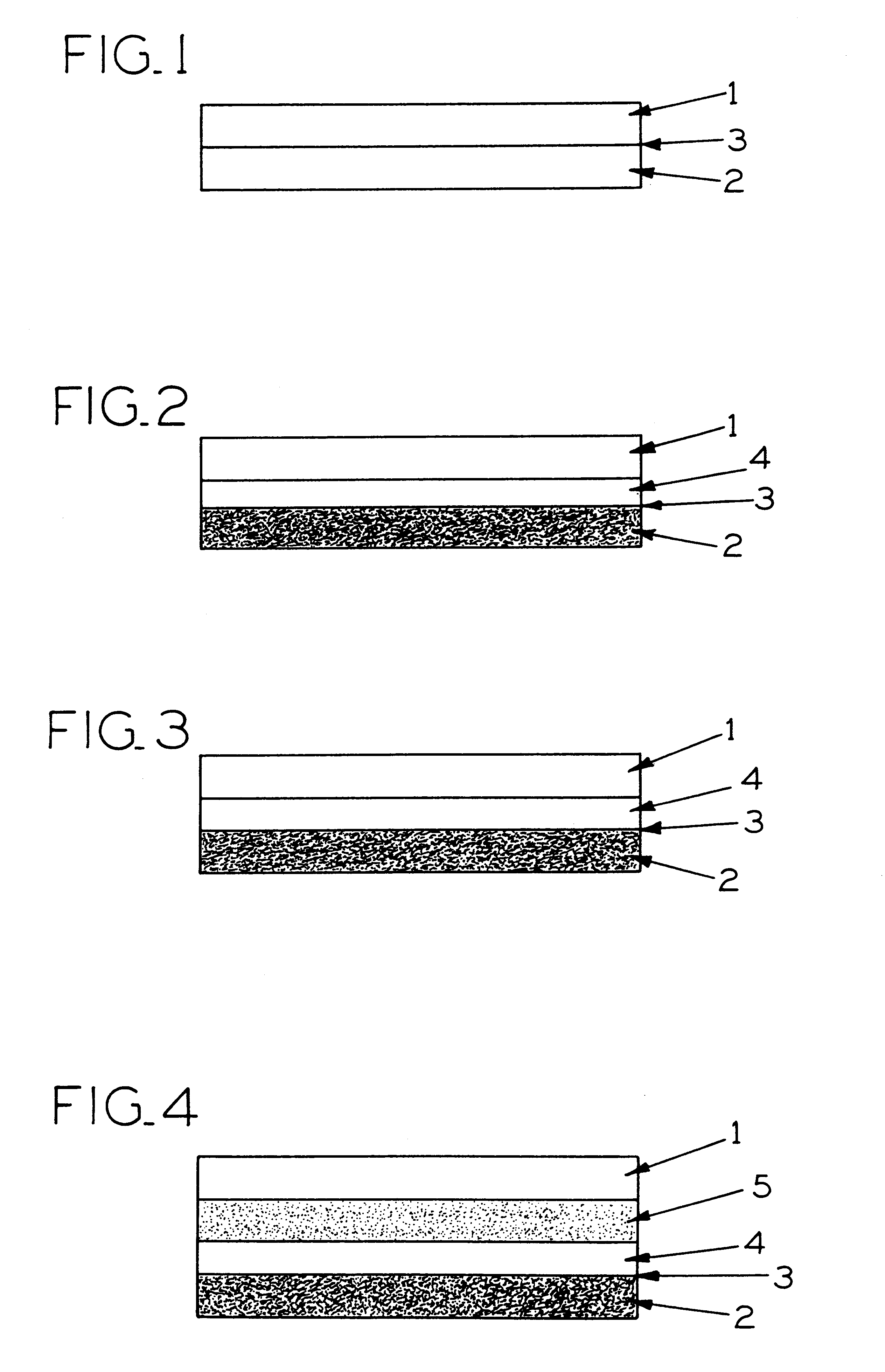Recording material for inkjet printing
- Summary
- Abstract
- Description
- Claims
- Application Information
AI Technical Summary
Benefits of technology
Problems solved by technology
Method used
Image
Examples
example 2
A contact adhesive laminate comprising a 140 g / m.sup.2 silicone paper (kaolin-coated siliconized kraft paper), 20 g / m.sup.2 of removable contact adhesive (Acronal 103L from BASF) and an 80 .mu.m monomer-plasticized, white PVC film which is provided on the free surface with an adhesion promoter layer is coated with the coating material stated below in a coating weight (dry) of 30 g / m.sup.2 by means of a rotating doctor on the adhesion promoter layer of the PVC film and is dried in a drying oven at 80.degree. C. for 5 minutes in order to form a porous recording layer capable of being converted into a film:
Precipitated copolyamide (Orgasol 3502 D Nat 1, Elf Atochem) of melting point 140.degree. C., mean particle size 20 .mu.m 68.0 g
Plastics dispersion of ethylene / vinyl acetate / copolymer (Vinnapas EP 400, Wacker Chemie GmbH) with minimum film formation temperature of 0.degree. C. 18.4 g
with mean particle size 0.8 .mu.m
Thickener polyacrylate (25% strength by weight) 4.0 g (Rohagit S vh, ...
example 3
A 140 g / m.sup.2 silicone paper (kaolin-coated siliconized kraft paper) is first coated with 20 g / m.sup.2 of permanently adhering contact adhesive (Acronal V205 dispersion from BASF), to which a wetting agent was added, and dried in a drying oven at 90.degree. C. for 10 minutes. The following coating material is then applied to the contact adhesive layer in a coating weight (dry) of 30 g / m.sup.2 by means of a rotating doctor and is dried in a drying oven at 80.degree. C. for 5 minutes in order to obtain a porous recording layer capable of being converted into a film:
Water 80.0 g
Polyamide 11 powder, Rilsan D30 NAT from Elf Atochem 16.0 g
Mean particle size 30 .mu.m
Polyvinyl alcohol Mowiol 4 / 88 from Hoechst AG 2.6 g
Cationic polymer, Additol VXT from Hoechst AG 0.8 g
Diethanolamine 0.3 g
Wetting agent (Surfynol 440, Air Products Inc.) 0.02 g
The coating material has a solids content of about 20% by weight and a pH of 9.0. It contains 81%, based on the solid substance, of thermoplastic pigme...
example 4
Example 3 is repeated in all respects except that 15% by weight, based on dry weight, of titanium dioxide (Bayertitan RFD-1 from Bayer AG) are added to the contact adhesive. As a result of this, the self-supporting film is present on the white lower layer (contact adhesive) after transfer to another substrate surface. It can then be applied to colored substrates without the substrate being visible through it. The values of the water resistance, of the light stability and of the separation force do not change relative to Example 3.
PUM
| Property | Measurement | Unit |
|---|---|---|
| Fraction | aaaaa | aaaaa |
| Fraction | aaaaa | aaaaa |
| Linear density | aaaaa | aaaaa |
Abstract
Description
Claims
Application Information
 Login to View More
Login to View More - R&D
- Intellectual Property
- Life Sciences
- Materials
- Tech Scout
- Unparalleled Data Quality
- Higher Quality Content
- 60% Fewer Hallucinations
Browse by: Latest US Patents, China's latest patents, Technical Efficacy Thesaurus, Application Domain, Technology Topic, Popular Technical Reports.
© 2025 PatSnap. All rights reserved.Legal|Privacy policy|Modern Slavery Act Transparency Statement|Sitemap|About US| Contact US: help@patsnap.com


